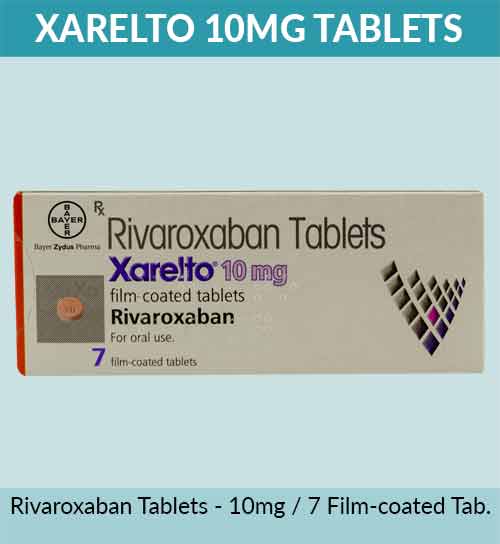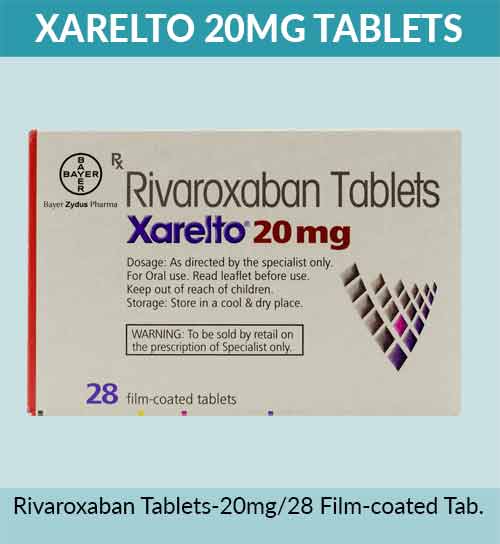Rivaroxaban
Rivaroxaban is a medication used to stop and treat blood clots. It belongs to a class of drugs called direct oral anticoagulants (DOACs) or novel oral anticoagulants (NOACs). Rivaroxaban works by inhibiting a specific clotting factor in the blood known as Factor Xa.
This medication is prescribed to reduce the risk of blood clots in conditions such as deep vein thrombosis (DVT), pulmonary embolism (PE), and atrial fibrillation (AFib) with risk of stroke. It is also used for the prevention of recurrent DVT and PE after initial treatment.
Rivaroxaban is taken orally as a tablet and is usually taken once daily with or without food. The dosage may vary depending on the condition being treated and individual factors such as kidney function.
It is important to follow the prescribed dosage and duration of treatment with rivaroxaban as directed by a healthcare professional. Abruptly stopping the medication may increase the risk of blood clot formation. Regular monitoring of kidney function and blood clotting parameters may be necessary during therapy.
Like all anticoagulant medications, rivaroxaban can increase the risk of bleeding. It is important to report any signs of bleeding, such as unusual bruising, prolonged bleeding from cuts, or blood in urine or stool, to a healthcare provider.
Rivaroxaban may interact with other medications, so it is essential to inform the healthcare professional about all current medications, including over-the-counter drugs and supplements, before starting treatment.
In summary, rivaroxaban is an oral anticoagulant used to prevent and treat blood clots. By inhibiting Factor Xa, it helps to prevent the formation of clots and reduce the risk of thromboembolic events. Strict adherence to the prescribed dosage and regular monitoring are important for the safe and effective use of rivaroxaban.



